Shaxian snacks are set to conquer hearts with unique flavors and exotic, fresh ingredients that are nature's gifts to this former trading hub in Fujian province, Li Yingxue reports.
As the first light of dawn filters through its windows, A-Lian Snacks stirs to life. Just after 6 each morning, owner Huang Xiulian threads through the market stalls where the scent of fresh pork and vegetables fills the air. She makes a careful selection of the day's ingredients — pork and freshly made tofu — returning to her eatery, located in Shaxian district, Sanming city, Fujian province, to prepare her signature dishes for the first of her steady stream of patrons.
A third-generation member of Shaxian's small community of traditional snack specialists, Huang is best known for her tofu balls, a delicacy crafted from a closely guarded family recipe. This meticulously prepared dish, in which tofu is mixed with ginger, pork belly and mushrooms, bursts with flavor and is packed with nutrients. It is seldom found outside Shaxian.
"The balls are dusted with a thin layer of sweet potato starch, steamed until cooked, and then used to make soup," Huang says.
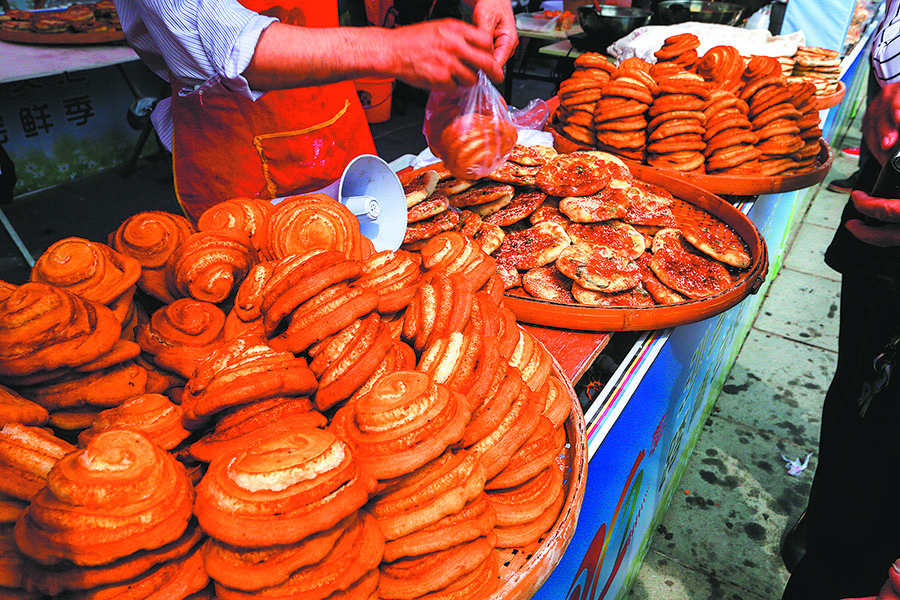
The coating demands precision. "If rolled too much, the skin becomes sticky. It must be just thin enough to seal in the filling's moisture."
Mindful of changing tastes, Huang has been innovating, and her minced meat filling is attracting many diners who line up in front of her shop. Her menu also includes tossed noodles, steamed dumplings and hearty soups. Their popularity explains why the Shaxian snack is called the "national snack" of China.
Not many may know exactly where Shaxian is, but everyone knows its food. Located in central Fujian, the district boasts a 1,600-year history as a bustling trading hub. Today, it is famous for the flavors that have traveled far beyond its borders.
President Xi Jinping visited Shaxian during an inspection tour of Fujian on March 23, 2021. He visited a food street and talked with local vendors. Highlighting the role that local snacks and similar industries can play in driving rural development, Xi encouraged people in the industry to innovate and improve their businesses.
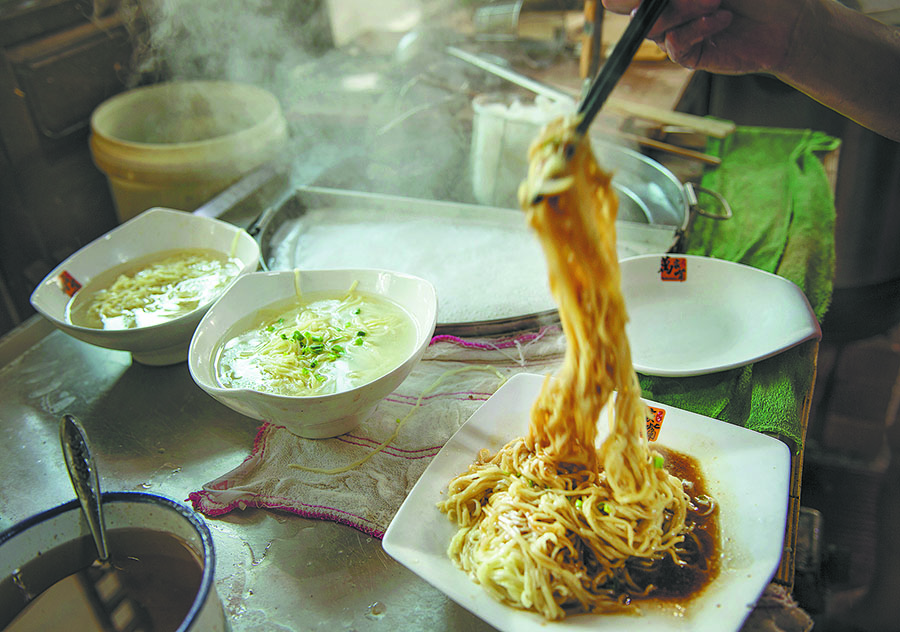
In the decades since Shaxian's humble food stalls first became popular, their snacks have become a nationwide phenomenon. There are more than 80,000 outlets across China, as well as a presence in dozens of countries and regions.
The Shaxian snack industry ranges from small workshops to large factories, from itinerant vendors selling snacks from carts to modern franchise operations, and from humble village outlets to international operations. This thriving industry is now a powerful driver of both farm incomes and the local economy.
Humble beginnings
Huang's shop, now a 150-squaremeter storefront, has been running for 17 years. She started it in 2008 after resigning from her position as a hotel manager. When both her parents and in-laws, skilled snack makers with street stalls, found it difficult to continue due to their advancing age, Huang felt compelled to keep the tradition alive.
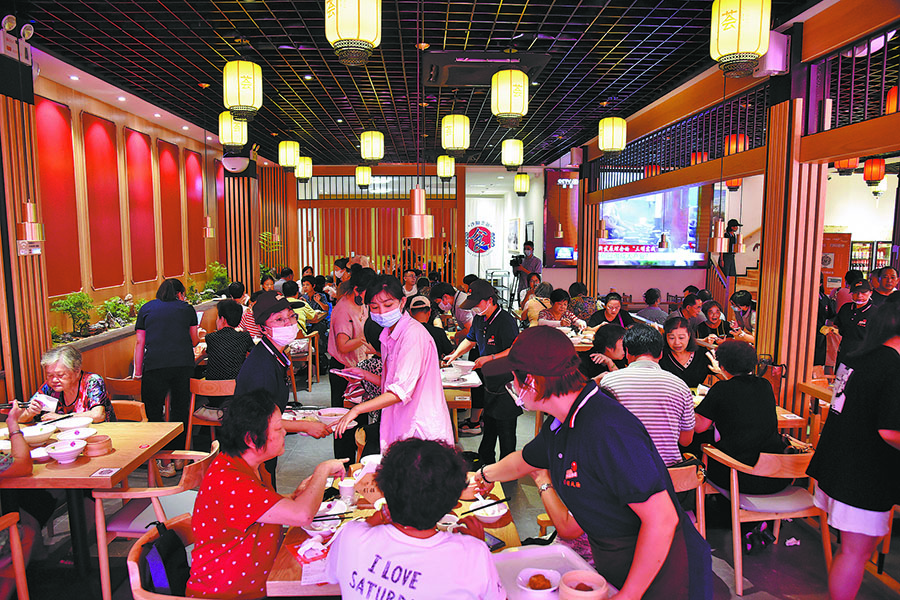
Her grandfather and mother were especially skilled at making shaomai (steamed dumplings). Her mother would roll the dough by hand until it was nearly translucent — 500 grams of flour could yield over 100 skins, compared with just 60 or 70 from today's machines.
"My grandfather used to sell them on the streets, and business was very good," Huang recalls.
His shaomai were entirely handmade and came in small batches. The filling was mostly dried bamboo shoots or fresh bamboo stirfried with meat.
When Huang first opened her shop, she relied on the family recipe but soon felt the need to cater to the changing tastes of the younger generation. Today, most fillings combine vermicelli with diced pork.
Another house specialty is luoba, a pan-fried rice cake, traditionally a savory snack. Huang has introduced a sweet variety, as well as a mugwort-flavored version for spring.
"We must innovate, or we won't survive," says this savvy businesswoman.
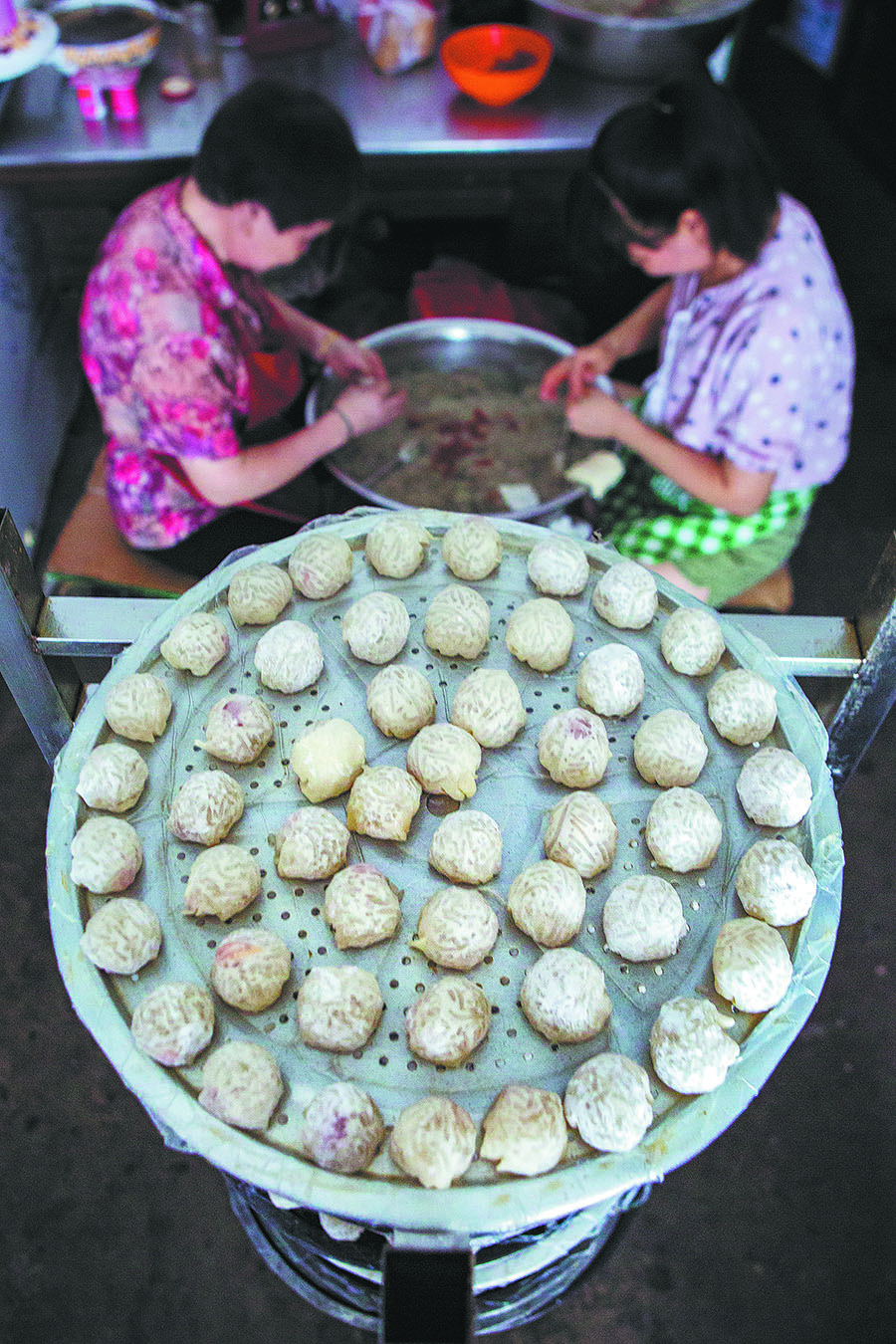
Her customers are a mix of locals and tourists — roughly 60 to 70 percent are visitors, while local patrons often bring friends from out of town.
For Huang, the charm of Shaxian snacks is that they are both "tasty and affordable". She plans to keep it that way, creating new flavors and ensuring the use of quality ingredients.
Huang's shop alone offers more than 100 types of snacks, and that is just half the full range.
According to Luo Ronghua, a writer and culture researcher from Shaxian, there are more than 200 varieties of Shaxian snacks.
In 2021, these snacks were included in the fifth batch of the list of national-level intangible cultural heritage representative items released by the State Council.
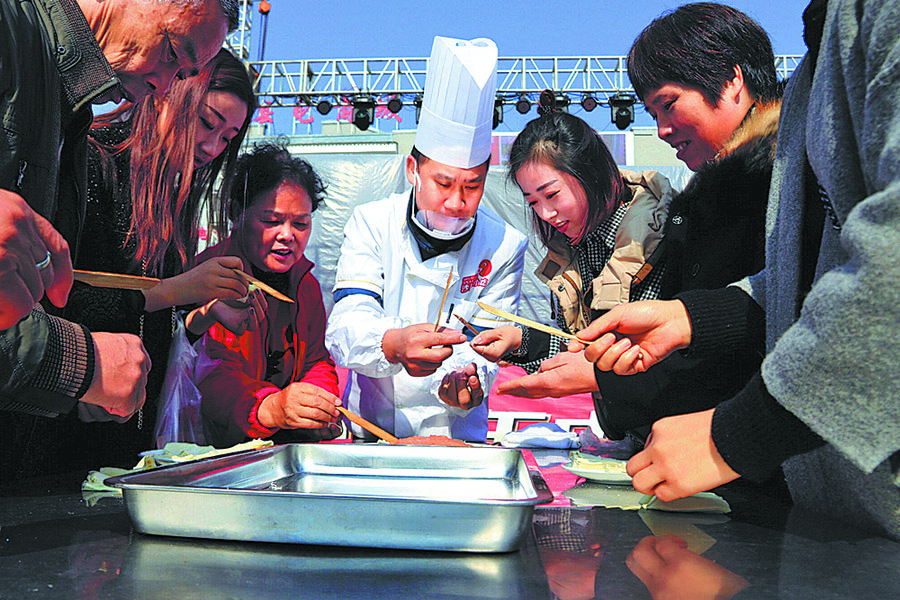
"Shaxian lies between two major mountain ranges, with a large river running through it. The subtropical climate is stable, and water resources are abundant, which makes this area an excellent place for crops," Luo explains.
"Rice, wheat and beans — the main produce — form the three main categories of the snacks: rice-based, wheat-based and bean products."
Shaxian snacks, Luo says, are a culinary tradition shaped by hundreds of generations, blending food from the Central Plains, local indigenous practices, and Hakka culture from Fujian, Guangdong and Jiangxi provinces.
They are tied not only to daily life and farming but also to social customs, such as birthdays, wedding celebrations and funerals, as well as folk beliefs, rituals and taboos, he says.
The weather has shaped the cuisine. In spring, families cook fiddle-head ferns with wild onions or make rice cakes during the early rice harvest. When new oil is pressed, they prepare cakes.
In summer, freshly harvested rice is steamed or turned into rice jelly and festive cakes, served with wine, eggs, pork and tofu for a family feast known as "eating the new".
Even everyday farmhouse dishes carry symbolic meaning — leeks are said to nourish the hair, tofu to sharpen the brain, snails to improve the eyes, bamboo shoots to build leg strength, and rice cakes to boost energy.
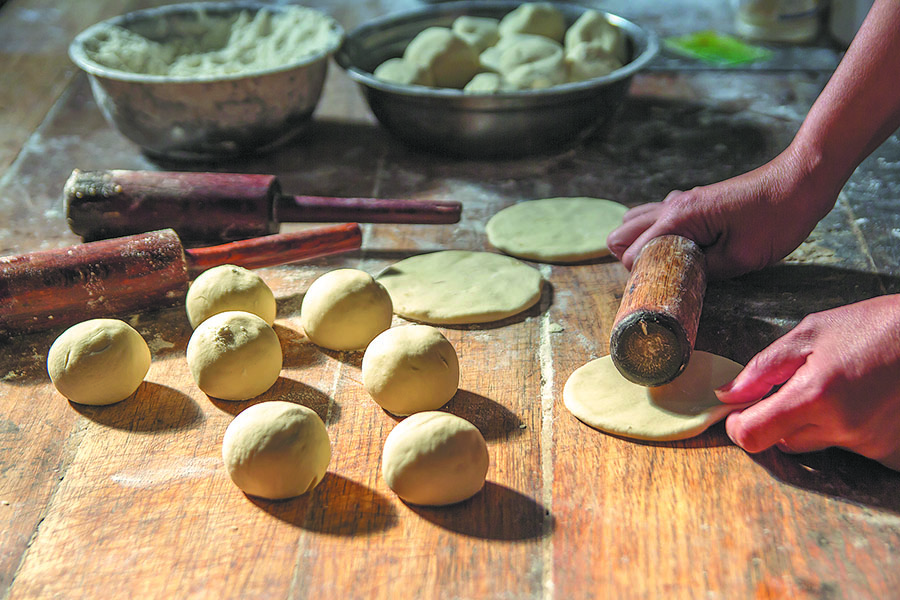
Luo also points out that Shaxian snacks reflect Hakka culture and their agrarian traditions, and the methods used for fermenting food by the Central Plains migrants. As a historical trading hub, Shaxian was influenced by the food traditions of traveling merchants, which enriched its culinary landscape.
Today, Luo says, the widespread popularity of Shaxian snacks reflects the people's openness and inclusiveness, as well as their hardworking spirit, daring to strive and succeed.
Going global
This same spirit has fueled the rapid growth of the Shaxian snack industry. The people of Shaxian see bianrou (minced pork dumplings) as the "bricks" and the tossed noodles as the "steel beams" that have, together, built the skyscrapers of their hometown.
Their hard work has helped spread the popularity of their cuisine nationwide.
Yu Ziyan, deputy director of the education and training office at the Shaxian snack industry development center, explains that early Shaxian snack shops were small family-run businesses.
Owners managed everything themselves, working tirelessly from dawn to dusk. They embraced the saying, "one yuan to enter, two yuan to eat enough, three yuan to eat well", and leveraged their networks of relatives and neighbors to expand the Shaxian snack industry nationwide.
Government support helped the industry grow further. Standards for production, culinary expertise, and store operations were established, and brand management systems now authorize thousands of stores online
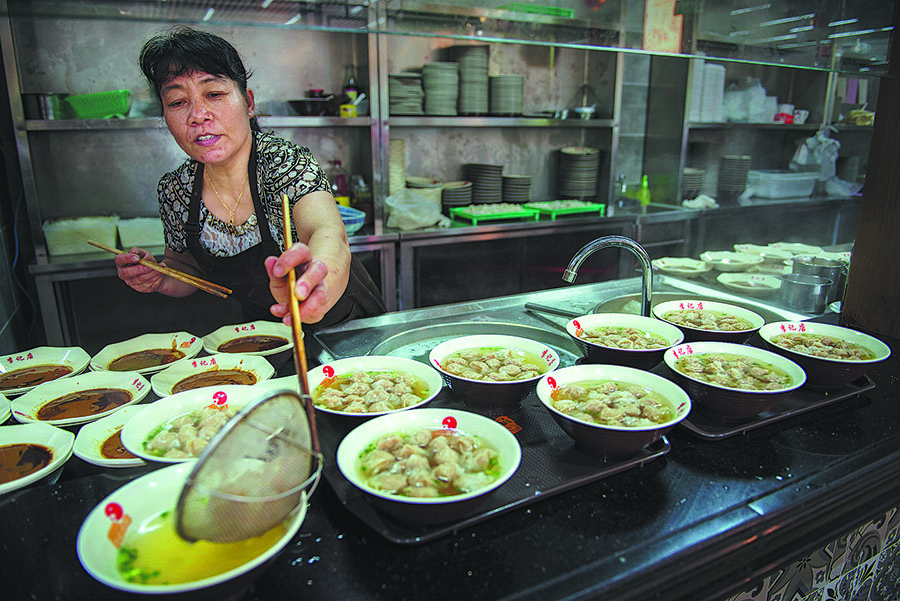
A Shaxian snack industry demonstration park hosts 26 related enterprises, creating more than 1,200 jobs. Local contract farming and the large-scale cultivation of ingredients, such as medicinal herbs and edible fungi, involve 20,000 farmers, ensuring a stable supply of raw materials.
The Shaxian snack trademark is now registered in 75 countries and regions, with 238 overseas outlets. "The market abroad is strong," Yu says.
In France, the first store opened in 2018 and drew many locals; in the United States, the first store sold out a day's ingredients in under three hours; and in Tokyo, the first store earned over 10,000 yuan ($1,400) in five hours, Yu says.
In May, the first Middle East flagship store opened in Riyadh, Saudi Arabia, attracting members of the royal family, who observed the cooking process and sampled dishes such as tossed noodles and steamed beef dumplings.
On opening day, the store saw sales of more than 50,000 yuan, with all handmade items sold out. Buoyed by this success, store owner Zhang Shichao plans to open 20 more stores in Saudi Arabia within three years.
Yu concludes: "I hope that more friends like Zhang Shichao, who love Shaxian snacks and their hometown, will join this 'going global' initiative, allowing more international friends to taste authentic Shaxian cuisine."
Contact the writer at liyingxue@chinadaily.com.cn


